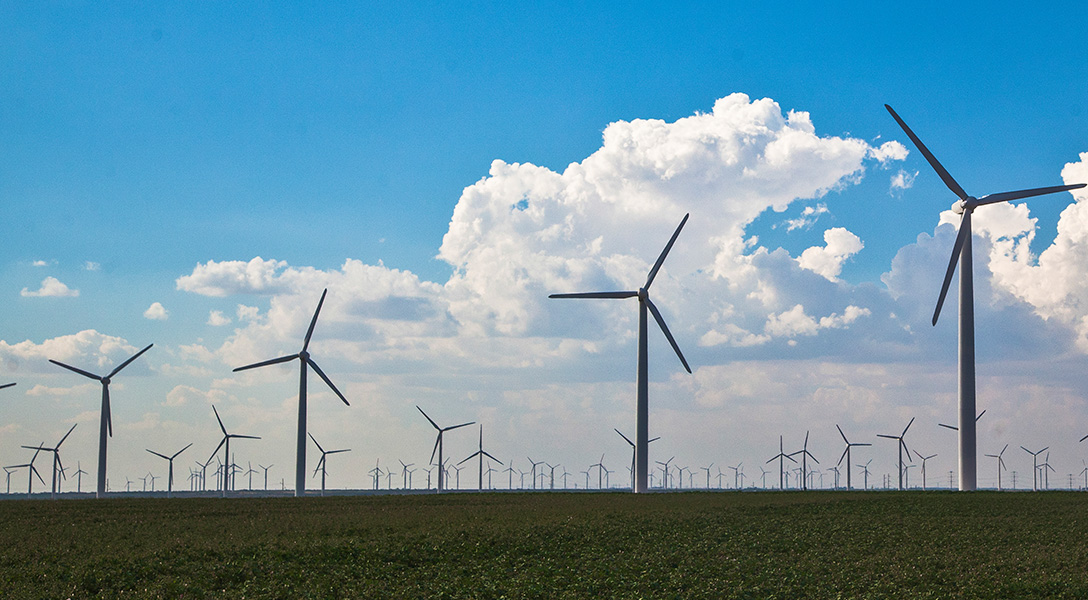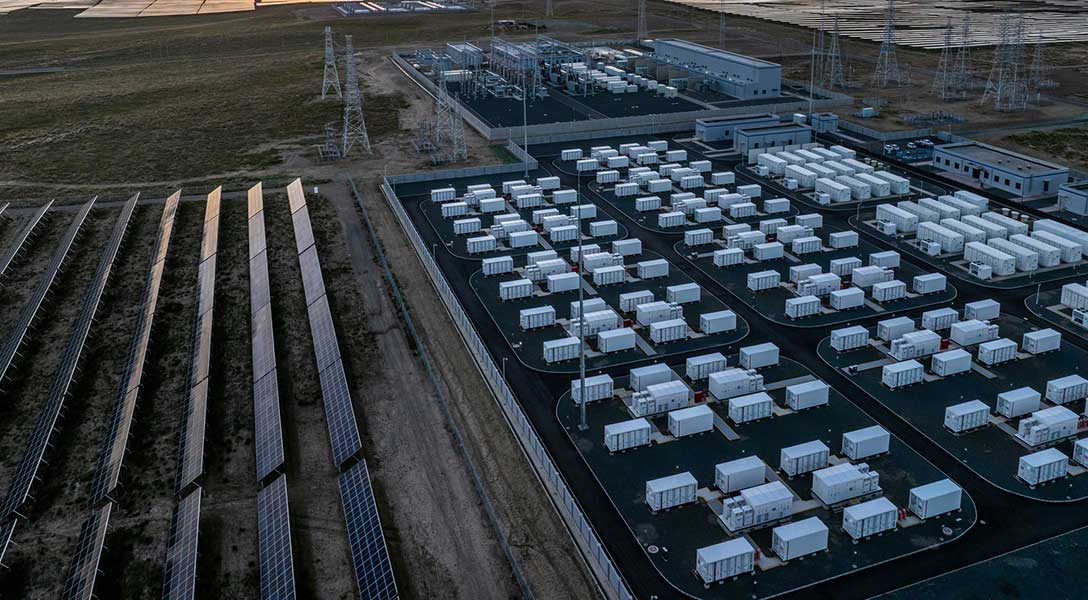
Energy transition means more than just additional electric vehicles
Q. What is the energy transition?
With so many terms in this area, there are actually different definitions. In the U.S. economy, the primary energy inputs are 80 percent fossil fuels. When we think about the energy transition, it’s a desire to move away from fossil fuels so that we stop emitting so much greenhouse gas pollution.
I think there’s also a sense among many policymakers that really what that means is electrification, that we’re going to expand renewable electricity on the grid and we’re at the same time going to shift away from gasoline cars toward electric vehicles. When people talk about the energy transition, I think often what they have in mind is electrification of the economy.
Q. How long is it going to take to “electrify” the economy?
There are real questions about this. The aspiration is to do this on the order of 10, 15, 20 years. I think that’s probably unrealistic based on the technologies that we have available today. It could take several decades. And again, it depends on what you mean by “completing” the transition.
We’re at the very early stages. And really what’s going to determine the pace of the transition and the ultimate time that it takes to decarbonize the economy is how much people want to adopt these new technologies and the features of the technologies themselves—the reliability of the energy supply, the transportability and storage capacity of various technologies and, of course, the cost.
If renewable electricity ends up stored in batteries that are more expensive than what we have today for the equivalent fossil fuel energy generation, then that’s going to make things more difficult.
Q. What kind of inroads have renewables—whether solar or wind—made in the energy transition?
Let’s start with some features of the electricity grid that we need. We need reliability. We need demand and supply to be equal in an engineering sense of the word in order for the grid to function correctly. And that means at every moment, when I plug in my refrigerator or turn on my dryer, something has to turn on or off in the generation mix in order to meet that demand.
Historically, that marginal source of generation has been a thermal generator, either a coal plant or a natural gas plant. Sometimes it’s dammed hydro. You need something that turns on and off in order to keep the grid balance at a very high frequency. And as we put more renewables on the grid, it doesn’t mitigate that need.
We still are going to need to turn on and off sources of generation at high frequency. And really what that means with renewables is batteries. We need industrial-scale energy storage that is affordable.
Q. How does the role of renewable energy vary across the country?
The biggest source of renewables in the world and in the U.S. is hydroelectric generation. When people think about renewable electricity, they aren’t necessarily thinking hydro. They’re thinking wind and solar. And those have been increasing very rapidly, but from a very small base.
Roughly one-fifth of U.S. electricity generation is renewable. A large, large share of that is hydro. What’s determining the mix of renewable electricity is the endowment—what resources are abundant wherever you need the electricity.In California, there’s a lot more sun than there is water. So we’re having a lot of solar. In Texas, there’s a lot of wind, and in Washington, there’s a lot of hydro. In this market, there needs to be an abundance of a resource in order to economically produce electricity using it.
Q. How will this transition to renewables or the energy transition—the electrification of the economy—affect the oil and gas industry?
These markets—the electricity market and the oil and gas markets—are different in terms of their scope. Electricity markets are local in the sense that you’re not producing electricity in Texas and shipping it over to Europe.
The markets are more global for oil and refined products than for natural gas, which is more expensive to transport than liquid fuel. The products that the Texas oil and gas industry is producing don’t have to be used in Texas, whereas the electricity that’s being produced in Texas is going to be used in Texas or nearby.
One of the things that I think a lot about—it’s a question that is unresolved in my mind and it’s of first-order importance for people thinking about the energy transition—is what implications does decarbonizing the U.S. economy have for climate-change mitigation efforts globally?
One scenario is that we decarbonize in the U.S. but then send all of our oil and gas to Africa, where there’s growing energy demand because of economic growth and population growth. This is not going to be the outcome that we want from a greenhouse-gas concentration perspective. In this scenario, the profitability of Texas oil and gas depends on how much demand remains worldwide—and, of course, how much production occurs elsewhere.
It’s possible that the U.S. electrifies and gets rid of internal-combustion-engine cars, and the global demand for oil and gas remains high because there isn’t a reliable electricity grid in a lot of the places where energy is being demanded.
It’s just not clear to me that the electrification path is one that’s going to be exportable to these countries. And if that’s the case, then I think Texas oil and gas producers are going to be selling oil and gas for longer than we think.
Q. How is the energy transition going to impact high- versus low-income households?
It’s important to point out that if renewable electricity were just simply a superior technology—and by that, I mean it offers the same energy services at a lower price or better energy services at the same price as the legacy energy sources—we wouldn’t need government intervention.
But we’re not there yet. You see a lot of subsidies and policies that are intended to stimulate the adoption of renewable electricity and the investment in it all over the country. The extent to which the government is supporting these is going to affect the end costs to households.
What we’re seeing so far is essentially lots of subsidies, particularly for electric vehicles and things such as rooftop solar, that are going to wealthy households. The distributional effects of these policies have been quite regressive, which is [I think] not what many people who care about the environment would want.
Q. Electric vehicles are very expensive, and solar panels are a huge investment. How can we make these accessible for low- to middle-income households?
If you subsidize an electric vehicle enough, then it’s going to become cheaper than its gasoline counterpart. In the car market, you don’t see low-income households buying many new cars, whether they’re electric or whether they’re gasoline. You see wealthier households buying new cars and lower- and middle-income households buying vehicles in the secondhand market.
There’s a trickling down of the technology through the income spectrum. There’s a lot of talk about wanting to get low-income households to buy new electric vehicles. That would be a dramatic shift from what we typically see in the pattern of buying cars. It’s going to take substantial subsidies in order to make that an economically viable choice for these low-income households.
Q. Delving a little bit deeper on these subsidies, you said they’re regressive, that they’re mostly going to wealthy households. You also show in your work that electric vehicles (EVs) are not actually substituting for gasoline-powered cars. Why is that?
We have seen that in California, electric vehicles are not driven as much as gasoline cars. Why would that be on average? Why would electric vehicles not be driven as much? There are a whole bunch of reasons why that could be the case. But one of the most compelling hypotheses about that mechanism is that when people buy an electric car, it’s often an additional vehicle for the household.
They’re not selling a gasoline car at the same time. We see in our data every car that every household in California owns. We see the patterns—when somebody buys an EV, it differs from when they buy gasoline cars. That makes us believe or conjecture that they’re used for different types of trips. People are holding on to their old gasoline cars so that they can use them for longer trips, going up to the mountains or out to the beach—places where there might not be a dense charging infrastructure.

This is conjecture at this point. We’re trying to test this in the data. I think it’s quite possible that once we have this all sorted out in our research, we’re going to see that these (EVs and gasoline-powered cars) are not perfect substitutes yet. Now, that doesn’t mean that EVs won’t become perfect substitutes in the future.
Maybe once we have a dense enough charging infrastructure so that people are comfortable with the prospect of filling their battery with electricity as they are filling their tank with gasoline, then maybe they’re going to replace their gasoline cars.
Q. What are the implications of the energy transition—given how difficult it has already been—on households of various income levels and on government spending? What can other countries’ experiences teach us?
I think there are some real lessons that we need to learn from Norway when we think about our energy transition policies here in the U.S. I’m choosing Norway as the example because they have successfully transitioned. Over 90 percent of their new-vehicle sales are electric vehicles.
Now, how did they make that happen? They didn’t do what the U.S. is doing and throw thousands of dollars’ worth of subsidies to each of these new cars purchased. They tax gasoline-powered cars. I don’t have the numbers, but it’s something like a 50 percent tax when you add in the import taxes and the gasoline surcharges. It’s an enormous tax.
So, why is this different than subsidies? Think about what it is that we actually are trying to accomplish from an environmental perspective.
What we really want to do is reduce carbon emissions. We don’t really care how much electricity is being consumed from a greenhouse gas perspective, except insofar as it is reducing emissions. Now, if you switch to an electric vehicle in Norway, that’s going to be producing a lot of emissions reductions because it’s reducing the amount of travel in gasoline cars.
Taxing gasoline cars is a great way to do that. Making gasoline expensive is a great way to do that. These are not the policies that we’re implementing here in the U.S. where we’re just subsidizing electric vehicles. If we’re subsidizing electric vehicles and we’re not taxing gasoline cars, then we’re going to end up with more cars on the road. And, by the way, this is why, in my view, the car industry here in the U.S. has supported these policies—they expand demand for their products.
Norway has a lot of lessons for us. They have a 98 percent renewable-electricity grid because they have such an incredible endowment of hydroelectricity there. They’re essentially taking gasoline cars off the road through these taxes and replacing them with electric cars that are powered by renewable energy.
Ironically, one of the reasons they can afford to do this is because they have so much oil revenue [from fossil fuel production]. So they’re not as budget constrained as some other countries.
Q. How can we better navigate the energy transition?
I think there’s a high likelihood because of the policies we’ve chosen that we’re going to look back in 10 years, and we’re not going to see the emissions reductions that were modeled by the policymakers.
They’re assuming that every EV is replacing a gasoline car, for example. They’re making all sorts of assumptions that might turn out not to be true.
What does this imply if you care about climate change? If that’s an issue you really care about, we need to shift the political calculus on carbon pricing. Until we make it expensive to emit carbon, we’re probably not going to achieve the main goal of this energy transition, which is reducing carbon emissions.
The views expressed are those of the authors and should not be attributed to the Federal Reserve Bank of Dallas or the Federal Reserve System.



